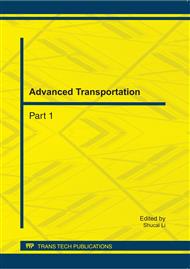p.942
p.947
p.952
p.956
p.960
p.964
p.971
p.976
p.981
Evaluation of Waterway Navigation Environment Based on SPA
Abstract:
In order to evaluate waterway navigation environment more systemically, the Set Pair Analysis Evaluation Model for the environment was established according to basic principle of SPA, on basis of safety affection factors being analyzed. In accordance with risk degree of each factor, the expression of Connection Degree can be obtained, proceeding with estimating the safety of a channel. This model used, the waterway navigation safety level can be evaluated more objectively, comprehensively and systemically, and criticalities of affect or indeterminate factors gained in a quantitative way. Targeting measures could be implemented to improve navigation conditions to ensure navigation safety with the assessment conclusion being based on.
Info:
Periodical:
Pages:
960-963
Citation:
Online since:
September 2011
Authors:
Price:
Сopyright:
© 2011 Trans Tech Publications Ltd. All Rights Reserved
Share:
Citation:


